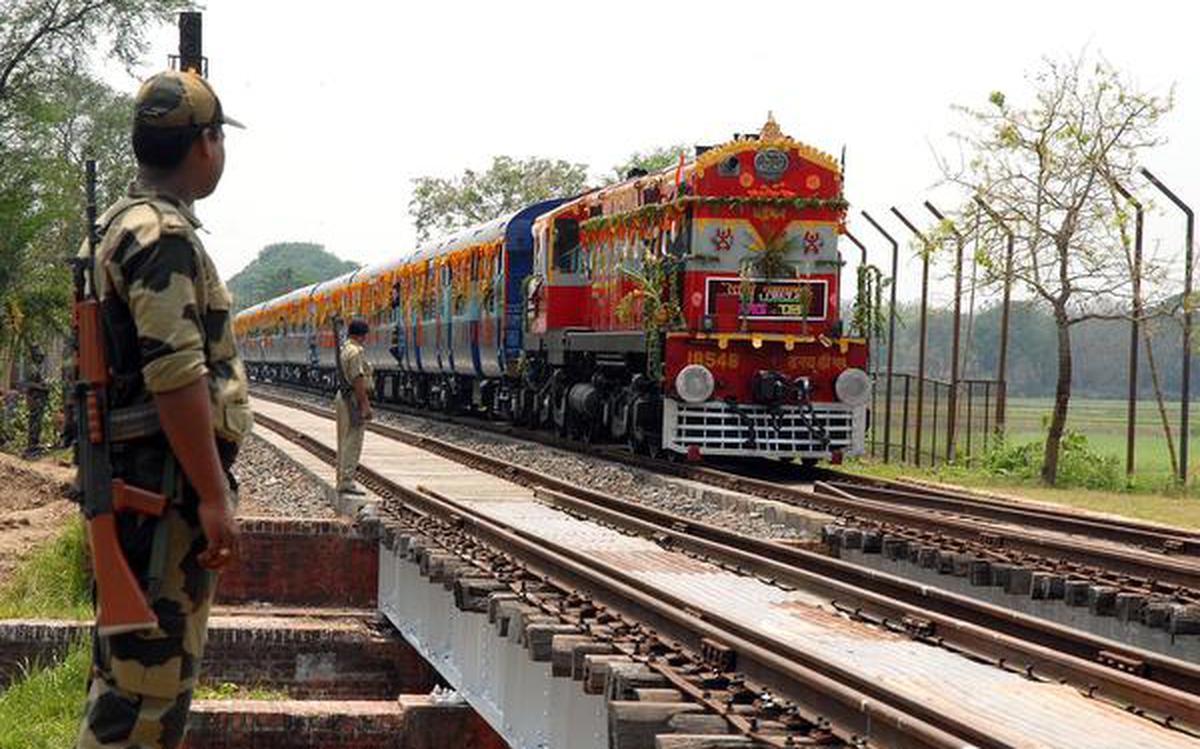Passenger train services between India and Bangladesh resumed Sunday, two years after they were suspended owing to the outbreak of the pandemic on March 28, 2020, with the Bandhan Express departing Kolkata for Khulna and the Maitree Express departing Dhaka for Kolkata. The Mitali Express, a third train, will be hailed by the two nations’ railways ministers later this week.

The Bandhan Express was resurrected by reactivating a long-dormant rail link between Kolkata and Khulna, Bangladesh’s third-largest city. The Barisal Express operated this route until 1965, when it was halted owing to the India-Pakistan conflict. Bandhan was revived in 2017 by the Narendra Modi administration and the Sheikh Hasina regime.
Following the launch of the Maitree Express between Kolkata and Dhaka Cantonment in April 2008, the Bandhan Express was the second train to depart. It spans the distance between Kolkata and Khulna, passing via Petrapole and Benapole on the way to meet the needs of people from both nations.
Since its inception, the Maitree Express has been a huge success. The 90 percent occupancy rate on the tri-weekly route between Kolkata and Dhaka used to be the norm. The train can transport 456 passengers, which is the same as the Bandhan Express.
AC Chair Car and AC First Class carriages are available on the Bandhan Express. Only 19 people were on board the Bandhan on Sunday, but officials predicted that number might rise.
The Mitali Express will run between New Jalpaiguri and Dhaka in North Bengal. PM Modi announced this train during his March 2021 visit to Dhaka.
Both nations’ governments have been attempting to improve the rail connectivity between them, and not simply through passenger trains.
In August 2021, the two countries resumed regular freight train service between Haldibari, India, and Chilahati, Bangladesh, using the newly repaired link.
The Haldibari-Chilahati train link between India and East Pakistan was also operating until 1965, when it was shut down owing to the war. At the time of Partition, this was part of the broad gauge major line between Kolkata and Siliguri. On this route, the two sides expect at least 20 freight trains to cross the border each month.
Trains continued to run between the two nations after the Partition because they were formerly part of a single, continuous railway network under British authority. As a result, the infrastructure to connect the two sides through trains was substantially there.
Policymakers on both sides saw this as a chance to strengthen diplomatic ties by allowing products and passengers to traverse borders.
Between India and Bangladesh, five rail routes have been restarted thus far.
Petrapole (India)-Benapole (Bangladesh), Gede (India)-Darshana (Bangladesh), Singhabad (India)-Rohanpur (Bangladesh), Radhikapur (India)-Birol (Bangladesh), and the Haldibari-Chilahati connection are among them.
Stone chips, ballasts, grains, and other items are commonly transported to Bangladesh. CONCOR, a railway PSU, has begun container shipping with private clients’ Fast Moving Consumer Goods. Typically, the goal is to develop a speedier and more cost-effective freight link by weaning them off of the sea route.
The Eastern Railway made it easier to import de-oiled soya cakes from Bangladesh last year.
Around 1.2 million tonnes of the cargo were carried via train in October of last year, rather than the customary route between the Nhava Sheva port and the Land Customs Stations, Petrapole Port.











